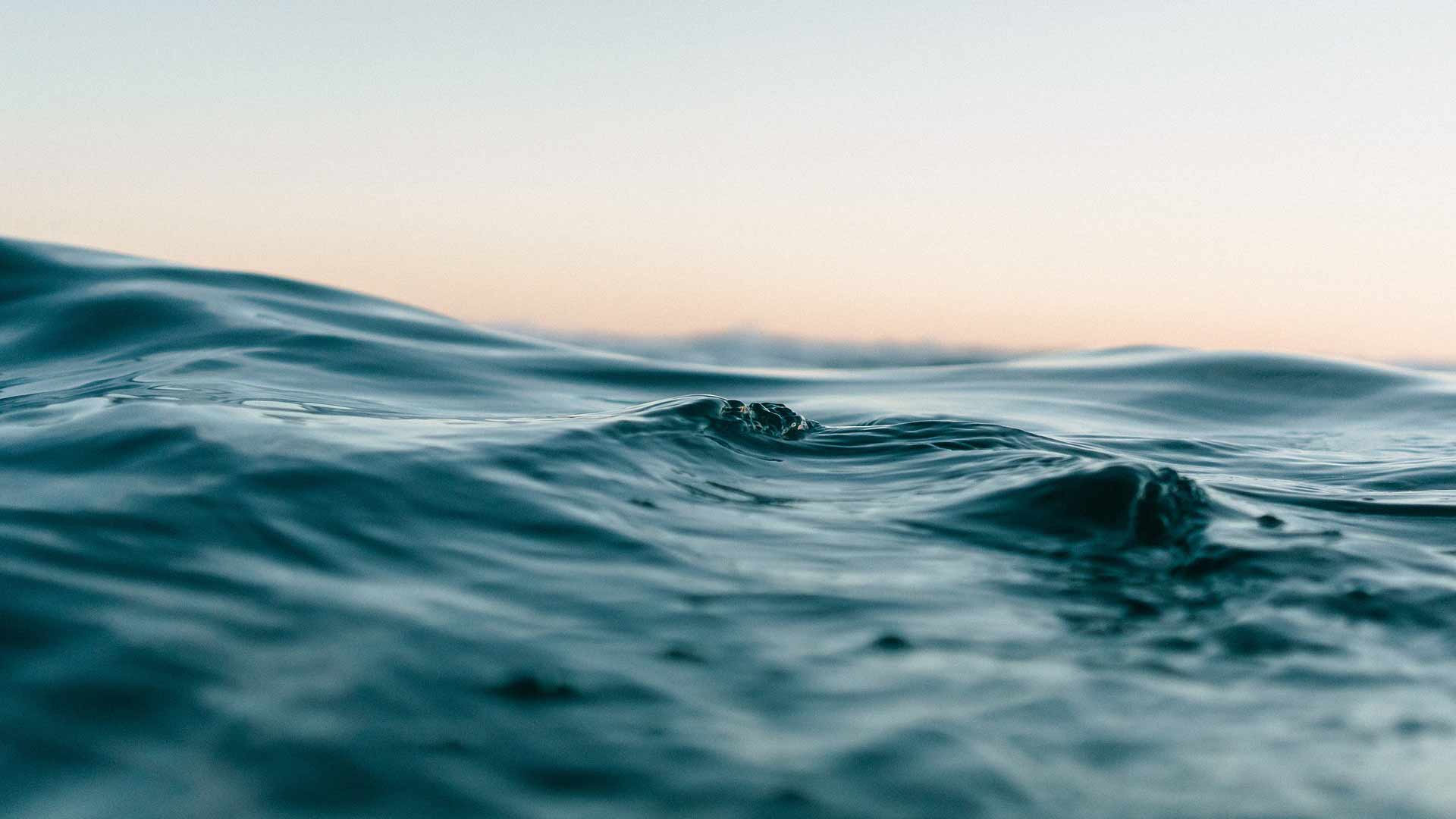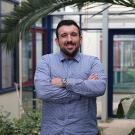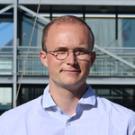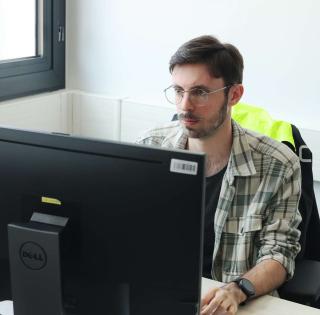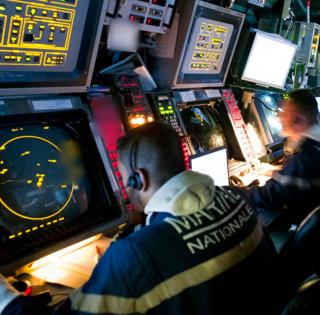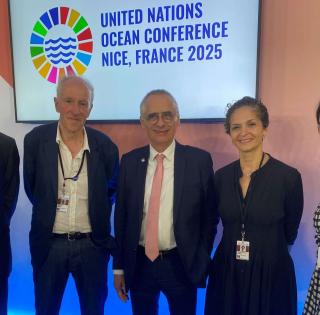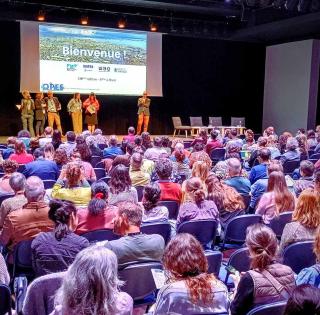
Matthieu Sacher and Laurent Mortier, teacher-researchers at ENSTA and members of CIMO and IngéBlue, are working on reducing the impact of maritime transport and marine observatories. They will be presenting a summary of their work at the OOSC international conference from June 2 to 6.
There's only one ocean
A resource essential to humanity's prosperity and well-being, the ocean plays a crucial role in climate regulation and in the livelihoods of three billion people, the vast majority of whom live in developing countries.
Climate change, overfishing, pollution and conflicts over use - the ocean is threatened by a combination of pressures. It urgently needs decisive, rapid and unified efforts to address its critical situation and maximize the solutions it offers.
Preserving the ocean, a central issue at the OOSC scientific congress and the UNOC3 United Nations Ocean Conference .
The third United Nations Ocean Conference (UNOC3) will be held in Nice from June 9 to 13, 2025. All the players involved - scientists, the business world, associations and political decision-makers - will come together to initiate and deploy concrete actions for the “conservation and sustainable use of marine and coastal ecosystems”, in line with the UN's 14th Sustainable Development Goal (SDG14), which is the least funded of all the SDGs.
In advance of and in support of this meeting, CNRS and Ifremer - along with their partners, including ENSTA - have been tasked with organizing the One Ocean Science Congress (OOSC) in Nice from June 3 to 6, 2025, dedicated to providing heads of state and government, as well as society as a whole, with comprehensive scientific information on the health of the ocean and its future trajectory. Science-based decisions should enable the conservation and sustainable use of the ocean, optimize the solutions it offers, and safeguard the services and benefits it provides to humanity.
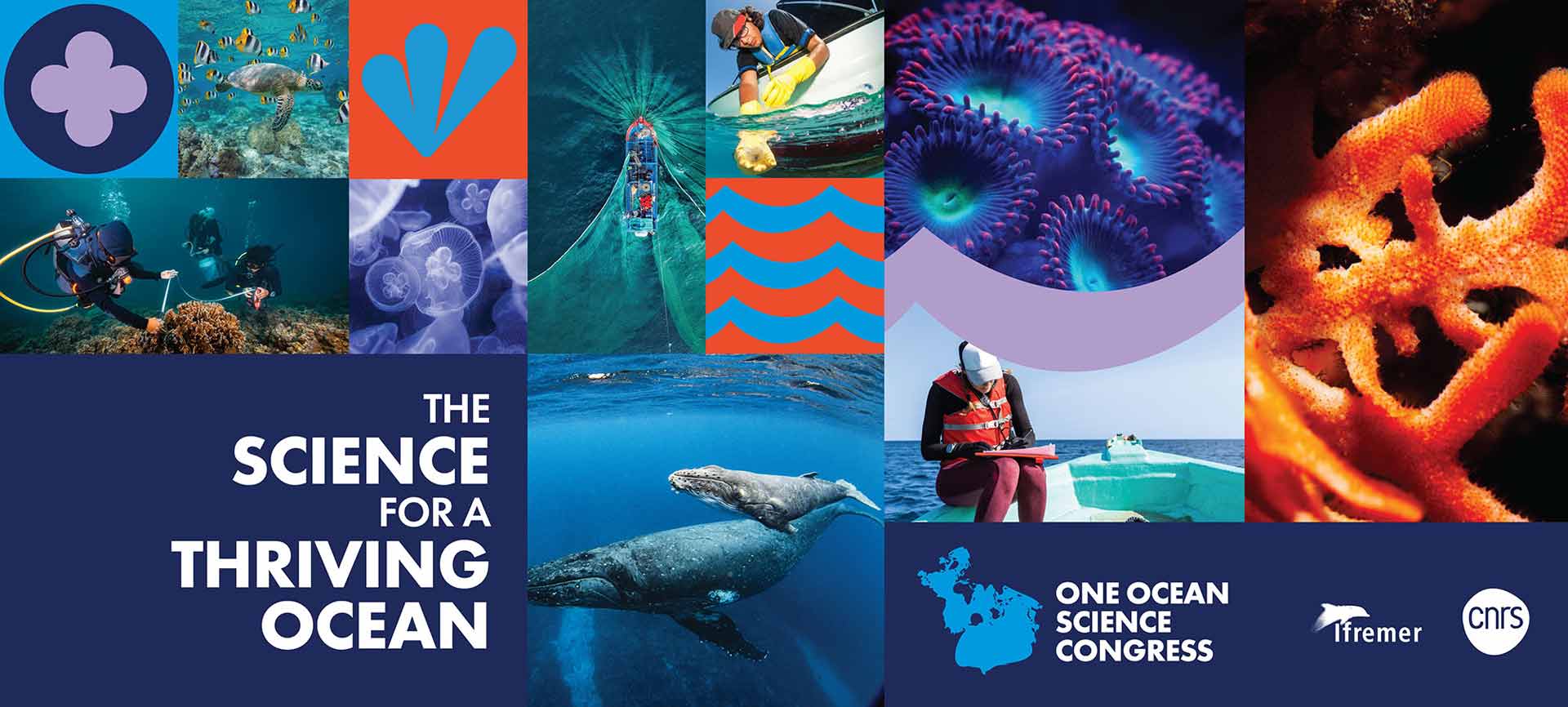
Two ENSTA researchers represent IP Paris's Centre Interdisciplinaire Mers et Océan (CIMO) and the Institut français d'ingénierie marine (IngéBlue), championing multidisciplinary, collegial research to rapidly achieve significant goals
Ifremer, CNRS, ENSTA and the schools of Institut Polytechnique de Paris have joined forces in the Centre Interdisciplinaire Mers et Océan (CIMO), ENSTA and the schools of the Institut Polytechnique de Paris are conducting multidisciplinary research to preserve the ocean, measure its evolution, reduce the carbon footprint of maritime transport or sustainably produce marine energy, by networking more than 200 researchers from the 6 engineering schools of IP Paris and national research organizations, primarily Ifremer and CNRS.
ENSTA is also the leader of the French maritime engineering institute “IngéBlue”, which brings together 15 institutions (schools, universities and public expert organizations).
Matthieu Sacher and Laurent Mortier are teacher-researchers at ENSTA and members of CIMO and IngéBlue. At ENSTA's Brest and Paris-Saclay campuses, their research focuses on reducing the impact of maritime transport and marine observatories.
Matthieu, Laurent, what are the objectives of your work at OOSC?
- Matthieu Sacher (Professor in mechanical sciences, hydrodynamics and marine engineering, he teaches naval architecture. He will be speaking at the OOSC on June 5):
"The dynamism of multidisciplinary scientific networks is a prerequisite for high-performance applied research, which will be able to deliver the knowledge and innovative capabilities expected more rapidly. I'm taking advantage of OOSC to pass on this message and illustrate it with a few research projects that we're carrying out with colleagues from other engineering schools and research laboratories to decarbonize maritime transport".
- Laurent Mortier (Professor in oceanography, he teaches ocean dynamics and is actively involved in the development of the Global Ocean Observing System) :
"In situ ocean observation relies on a large number of players, including researchers with diverse motivations, and coordinating their activities remains a complex issue involving significant costs. Halfway through the Decade of Ocean Science, the OOSC provides an appropriate framework for making progress on the issue of research infrastructures. Their role in consolidating and sustaining the ocean observation system is now better recognized, but raises the issue of sharing resources and coordinating them with operational agencies. An OOSC session is devoted to this issue, as is a "townhall", in which my European colleagues and I are giving presentations, and I'm moderating."
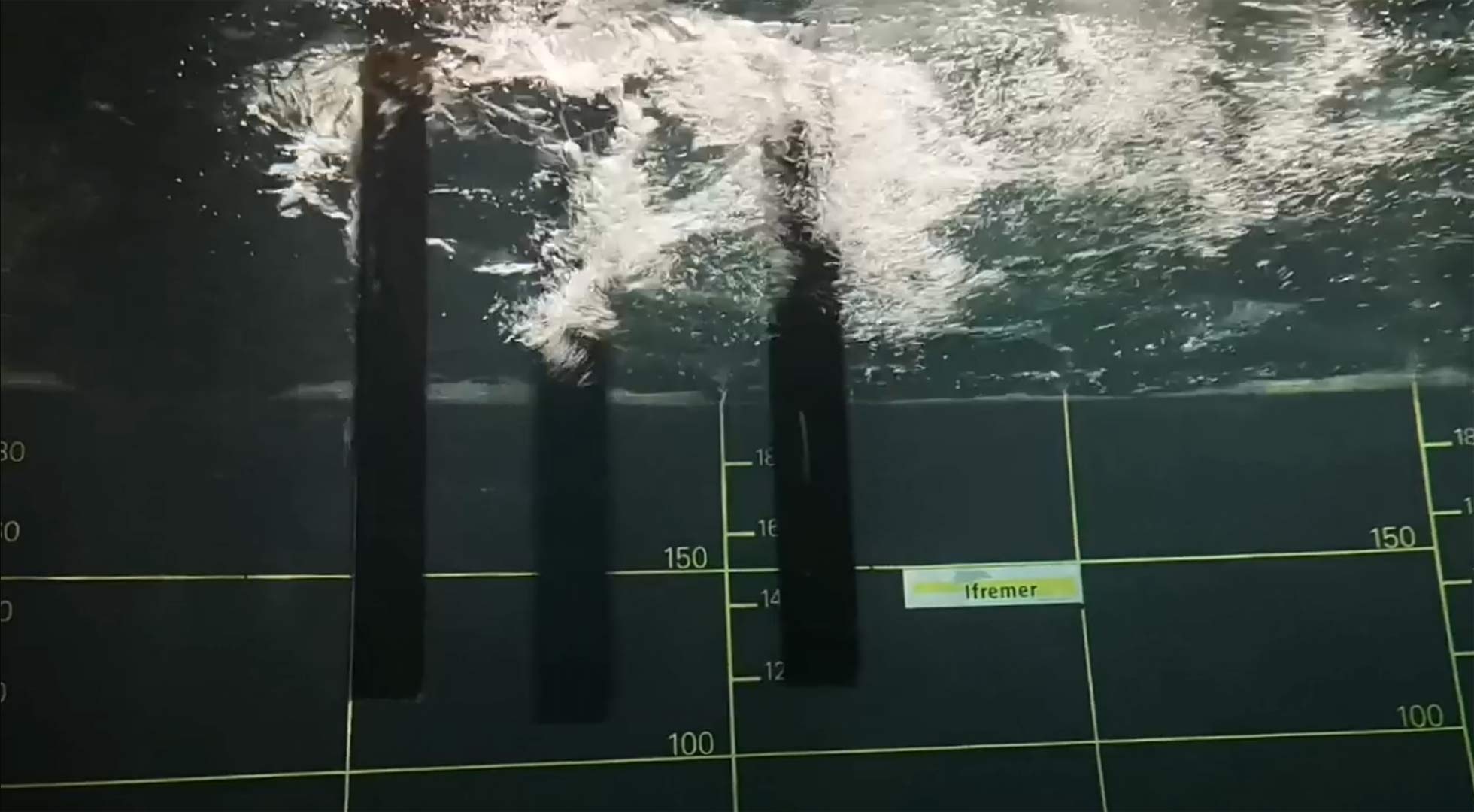
Matthieu, the aim of your work is to model the performance conditions of new ship propulsion systems (veliac systems, hydrofoils, innovative thrusters) in order to reduce ships' fuel consumption (fossil fuels) and their environmental impact (CO2 emissions). Who are you working with on these projects, and what's the team's current status?
These projects benefit from French public funding via the Defense Innovation Agency (AID), insofar as their applications concern both maritime transport and naval defense platforms. We obtained them by bringing together teams from ENSTA (IRDL research laboratory, CNRS UMR), Ecole Navale, Ifremer and ENSM. We're all part of the IngéBlue network, which helped us respond to the IDA call for projects.
Wind propulsion is a promising solution for decarbonizing maritime transport. However, its integration on ships poses challenges in terms of maneuverability and piloting. At ENSTA's Mechanics Laboratory, we are developing physical models to assess and optimize the energy performance of ships equipped with rigid sails, semi-rigid sails, kite wings or rotors. These models will be integrated into a 3D simulator by ENSM to train sailors.
The addition of sails modifies the ship's behavior, influencing the hull and propulsion chain. The choice of maritime routes is also more dependent on weather conditions, requiring new routing systems. Since January 2024, the SOMOS project, led by ENSTA and ENSM, aims to understand and optimize these interactions. We are developing physical models to simulate the complex forces and interactions between the sailing propulsion system and the ship.
A navigation simulator, developed by ENSM, will integrate the physical models to assess the operational impacts of the propulsion systems. Fuel consumption estimates, routing algorithms and international navigation rules will be tested using man-machine interfaces. CFD modeling expertise guarantees optimization of the ship's aero-hydrodynamic coupling.
These software tools will be available on an online platform, accessible to academics and industry alike, to foster collaborative innovation.
Matthieu, your research also focuses on vertical-axis ship propellers (SHIVA and SAWASP projects). Fantasy or reality, how can we be sure of the performance of such an innovation?
Measuring and predicting the conditions for the success of such an innovation is precisely the role of our research projects.
The SHIVA project, funded by AID and carried out by ENSTA, École Navale and Ifremer, aims to optimize the performance of an all-electric vertical-axis marine thruster. It is capable of generating 360° of thrust using blades that can move around two axes, thus partially or totally compensating for the effect of drift that slows down the ship's progress. Multi-model optimization approaches aim to maximize propulsive efficiency. This thruster holds great promise for wind-assisted vessels.
Unlike a conventional propeller optimized for a single operating point (a given speed and rpm), this all-electric thruster with steerable vertical blades enables thrust to be continuously adjusted according to sailing speed. This ensures optimum hydrodynamic efficiency, even in the case of wind propulsion, which greatly modifies the balance and operating point of the propulsion system.
With this in mind, ENSTA, École Navale, Ifremer and Georgia Tech Europe have launched the SAWASP project, with financial support from the Carnot Institutes ARTS and MERS. The aim is to study the optimal aero-hydrodynamic coupling of a hybrid ship demonstrator, combining a rigid sail and two all-electric vertical-axis thrusters. This demonstrator, a 6-meter-long vessel, is currently under development.
An initial thesis has already optimized the thruster's hydrodynamic performance. Dock trials, to be carried out in Ifremer's facilities, are scheduled for November 2025. The first sea trials, in Brest harbor, are scheduled for summer 2026.
Laurent, what are the main scientific orientations and objectives for ocean observation, from the deep ocean to the coasts?
"In many ways, ocean observation is the foundation of today's climate observation organization.
While we observe in order to discover - the exploration of the unknown always concentrates the same forces - and understand phenomena, we need to collect data in a highly systematic way to help societies and economies cope with hazards, climate change and the necessary exploitation and preservation of resources.
From the deep seas - there is much talk today of their mineral exploitation - to the coasts - half the world's population lives within a few dozen kilometers of the seashore, and the EEZ concentrates a very large proportion of exploited resources - in-situ observation, complemented by the integrated but partial vision of satellites, enables us to understand the extremely complex interactions between these environments, from physical processes to marine ecosystems that have always fascinated mathematicians. But it also enables us to create indicators that can be used for maritime policies, to manage fishing licenses, to combat illegal activities and so on.
The aim today is to stabilize the operation of the many ocean observation systems, to better coordinate them and, above all, to improve their efficiency, as their costs are very high _ or relatively modest compared to the benefits of these observations and knowledge.
Laurent, how do you approach these issues in your work as a teacher-researcher?
As a scientist, I first tried to make people understand the absolute necessity of observation, whereas the role of modeling - and the engineers at our schools excel in this area - has tended to overshadow it a little too much, at least in France. Every year, we take students from the ENSTA Paris-Saclay campus on oceanographic expeditions in the Mediterranean, and they come back transformed. This is also one of the areas of expertise (hydrography and oceanography cat. A) on the ENSTA Brest campus.
For the OOSC and the UNOC, the ECOPs as they are called - Early Carrier Ocean Professionals - are an absolute priority. But it's true that I've been a research infrastructure activist for almost 20 years. EU funding programs have stimulated the construction of an ecosystem of infrastructures that play a central role in Europe, to organize the means of observation at sea in particular, and which by domino effect one might say, also structures the organization on a national level, and increasingly on a global level. I started with the question of automated observation by drones. This is an important trend, as observation by research vessels has many limitations, not to mention the need for decarbonization, which is prompting us to review the complementarity of observation resources.






